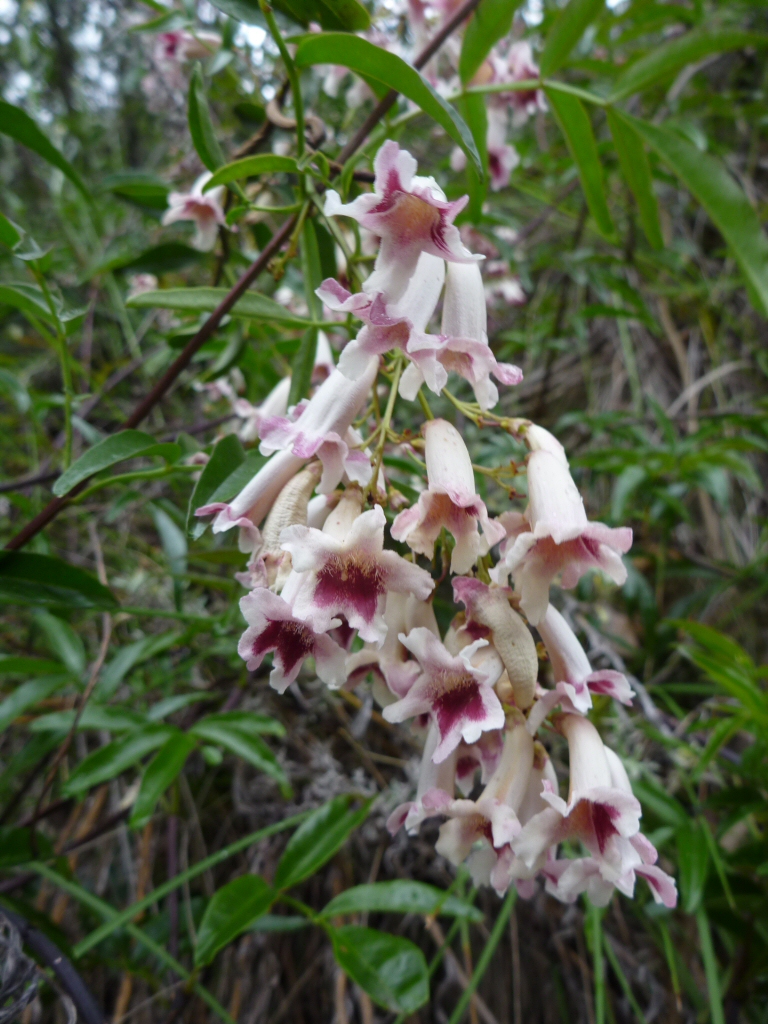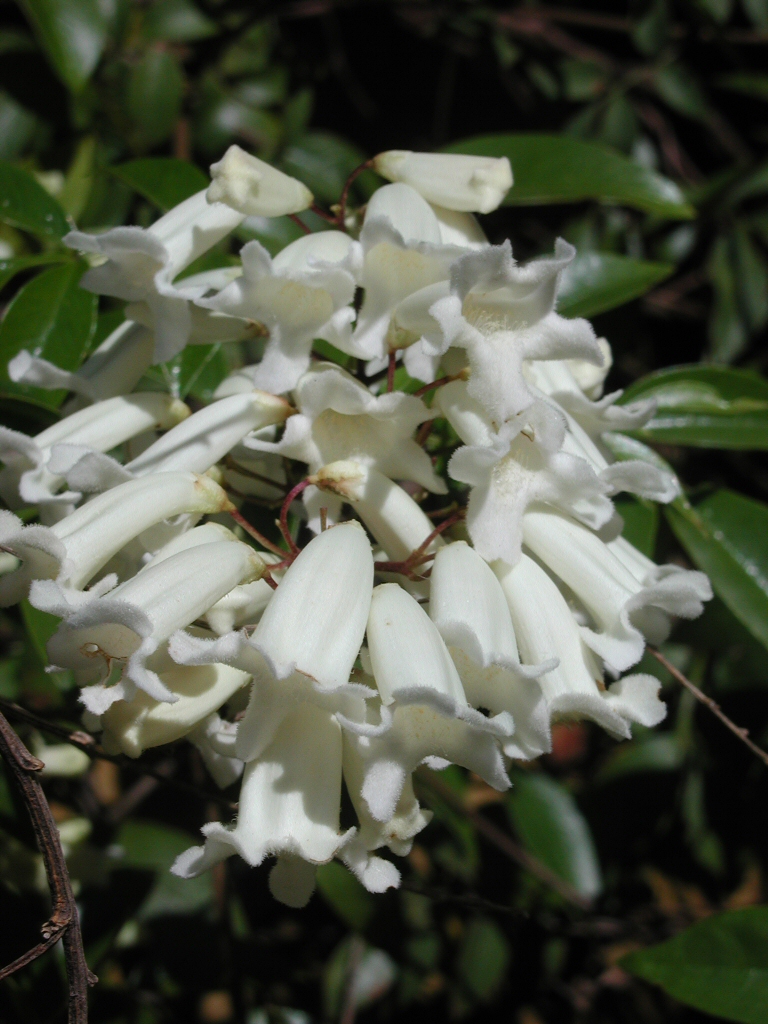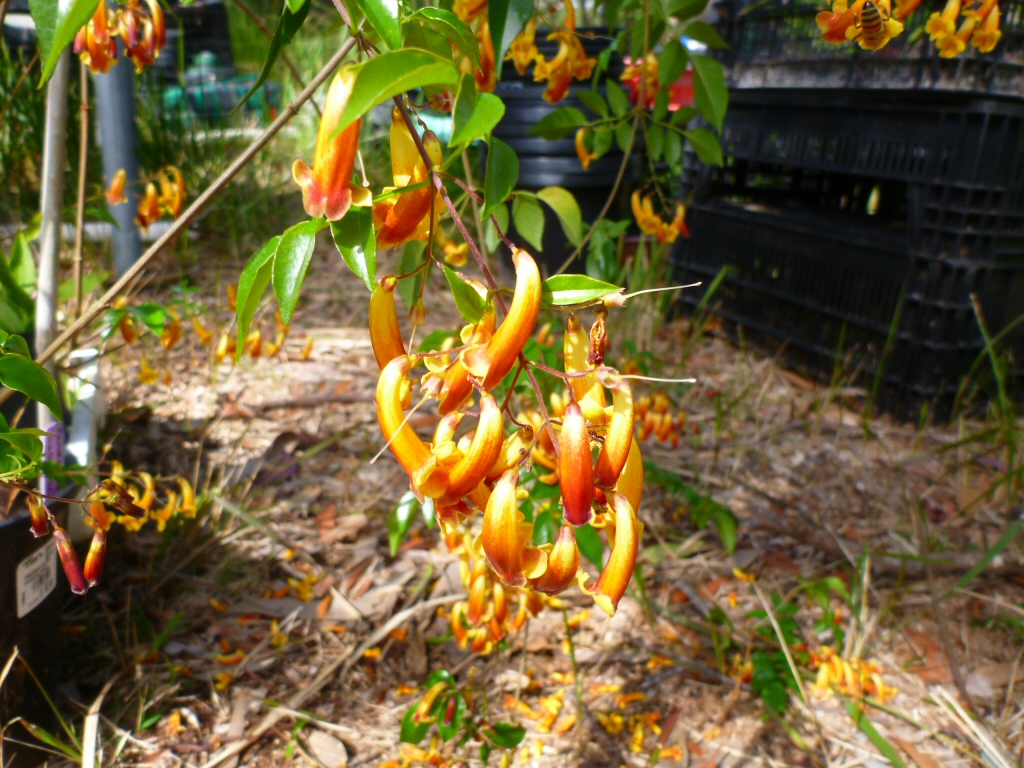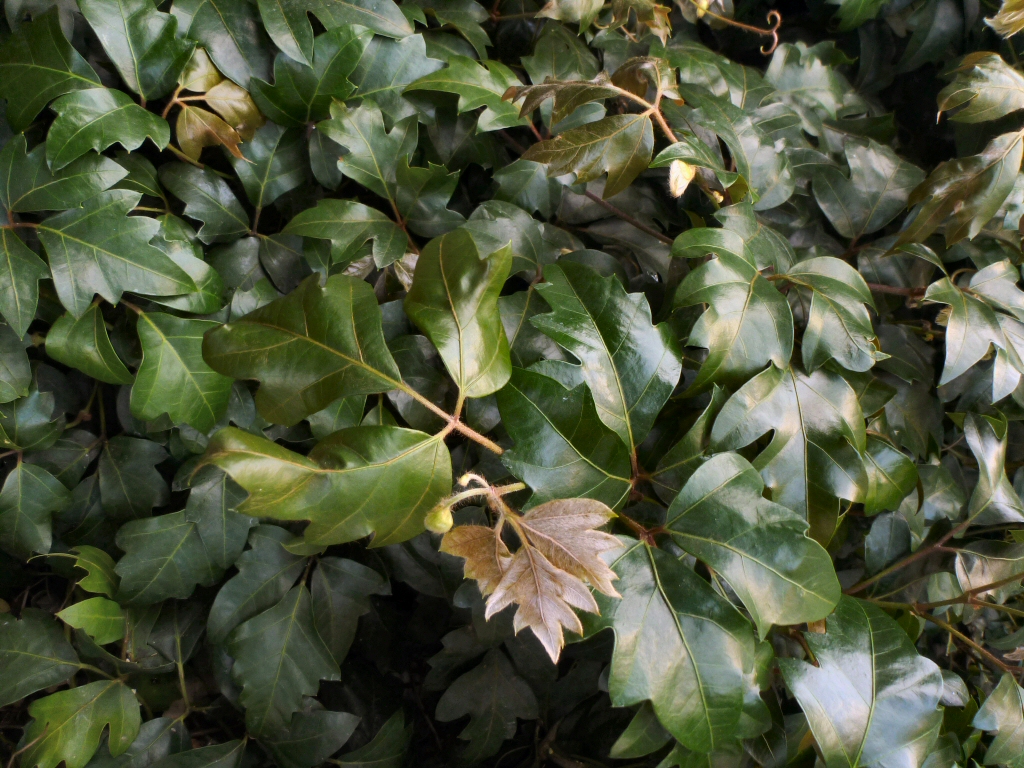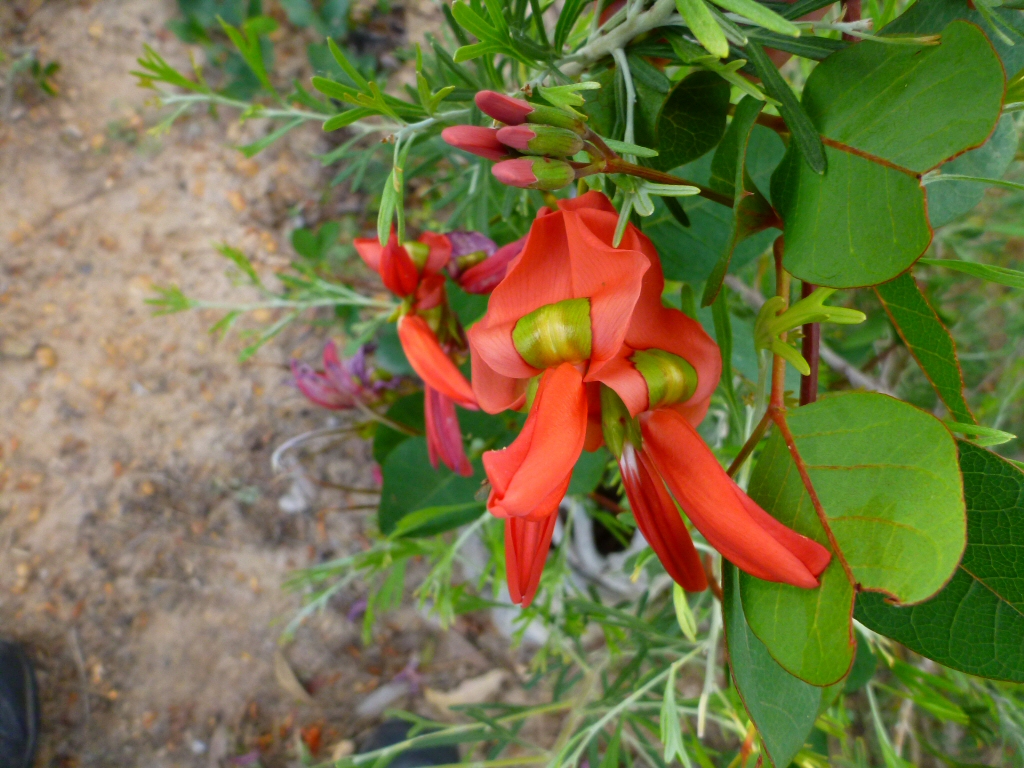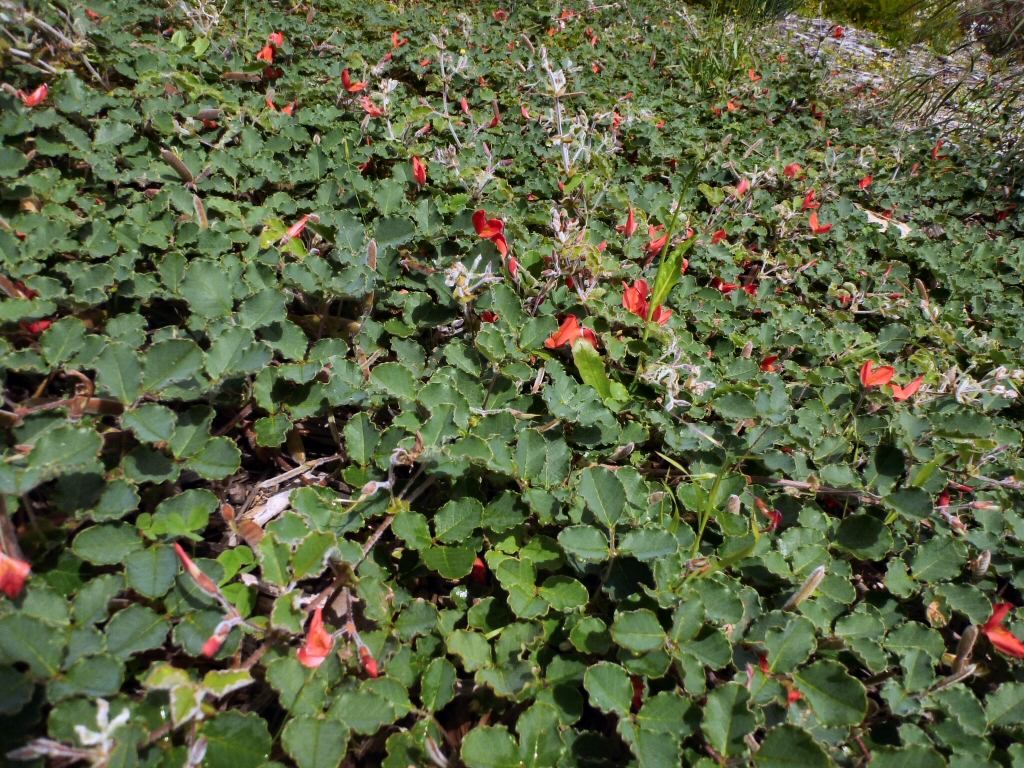Climbers and creepers are plants that are able to expand at will to fill the space available to them and as such are incredibly useful in the garden. They are great to beautify fences and pergolas, and can be trained to twine through various shaped structures. Their ability to take the shape of the support means that climbing plants are great for adding privacy to an area where a shrub may not be suitable. They can also be grown in containers for this purpose too, which can be handy to limit root growth.
-
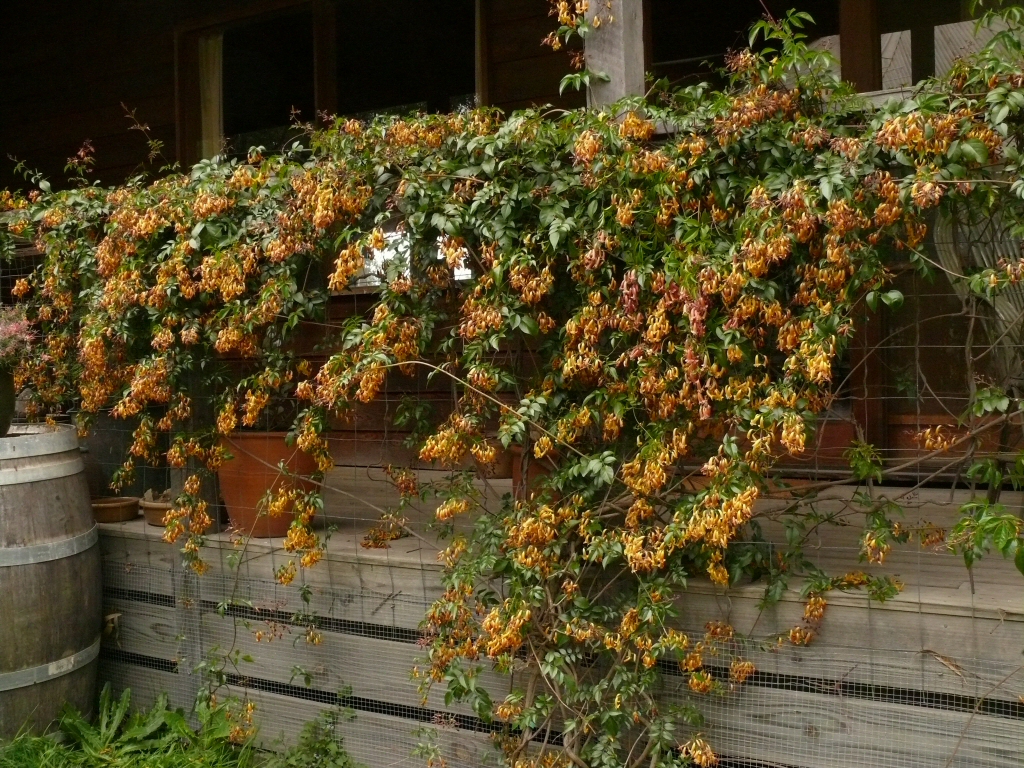
Pandorea pandorana 'Wonga Gold'
-
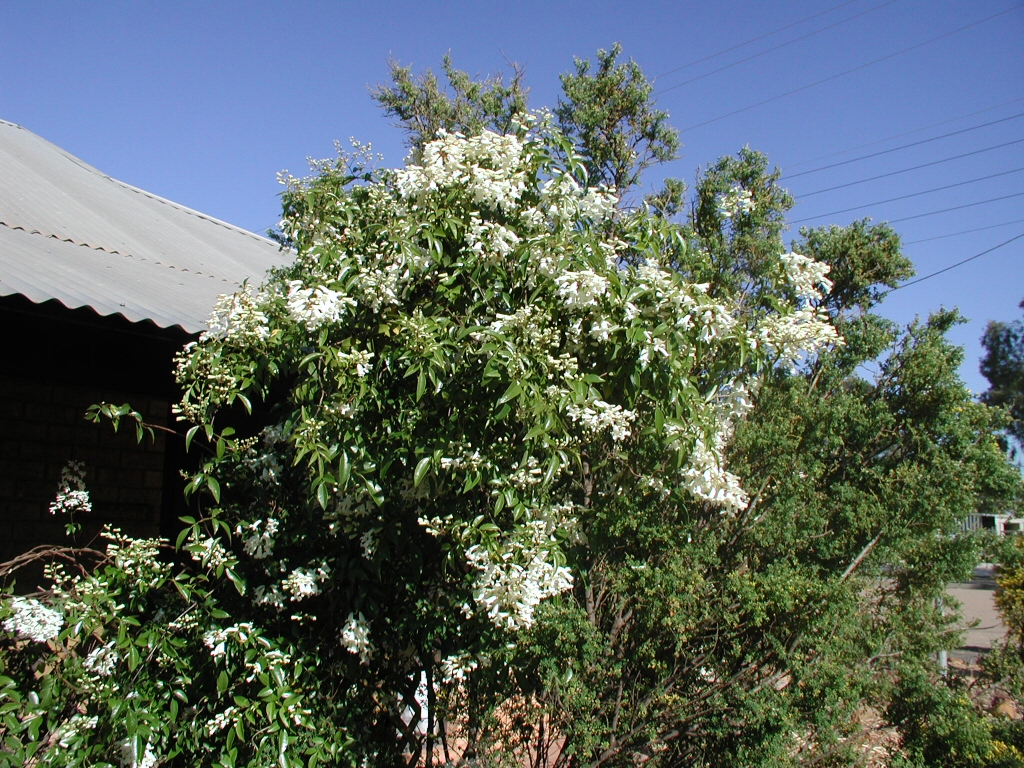
Pandorea pandorana 'Snow Bells'
-
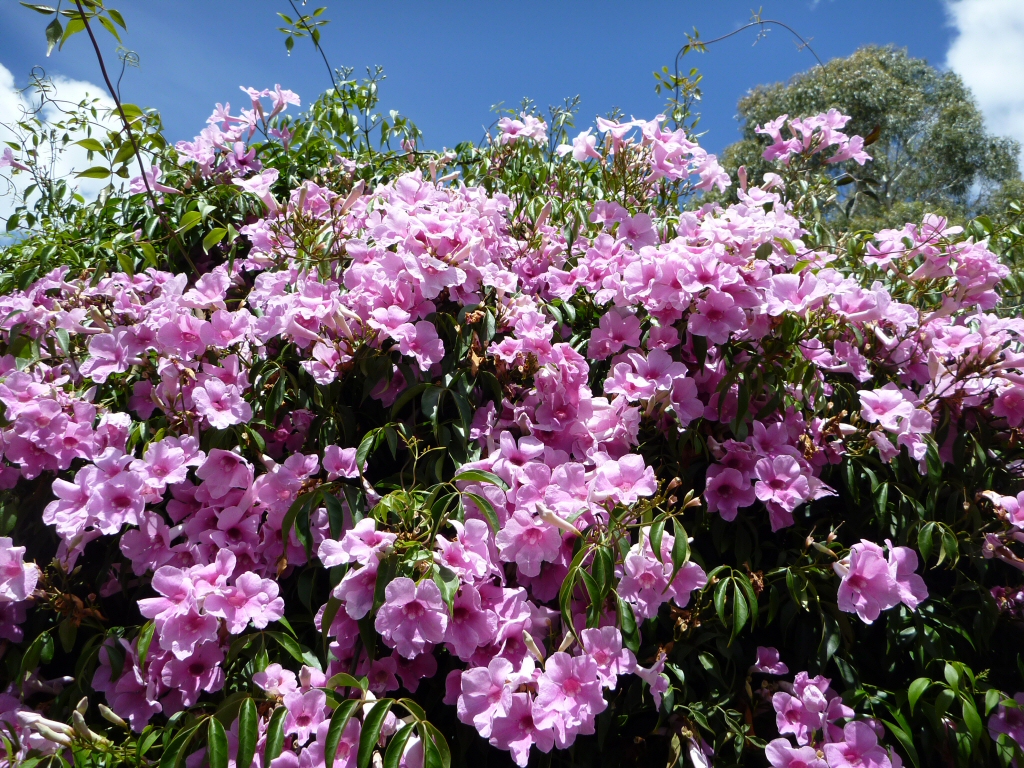
Pandorea jasminoides 'Southern Belle'
Through various ingenious adaptations these plants are able to not only climb upwards onto whatever support is provided, but can also be used as ground covers. Some caution needs to be exercised with this often rampant group of plants when it comes to planting near trees and shrubs as they will readily use such plants as support but can cause great damage and even eventual death to the host plant.
-
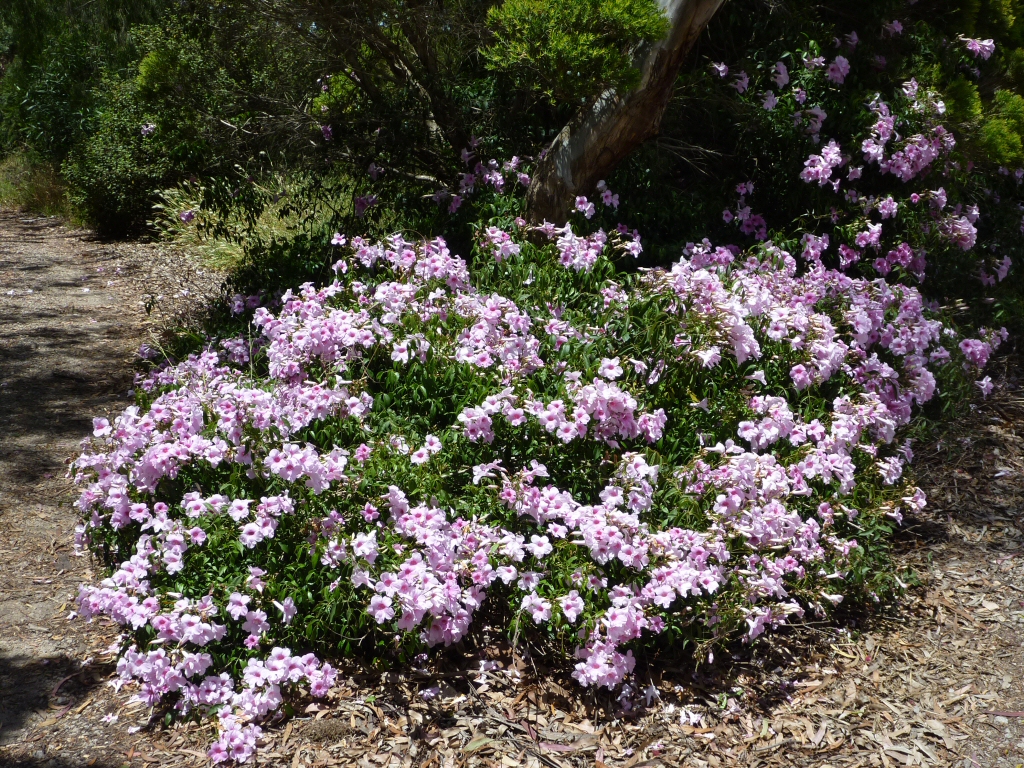
Pandorea jasminoides 'Southern Belle'
-
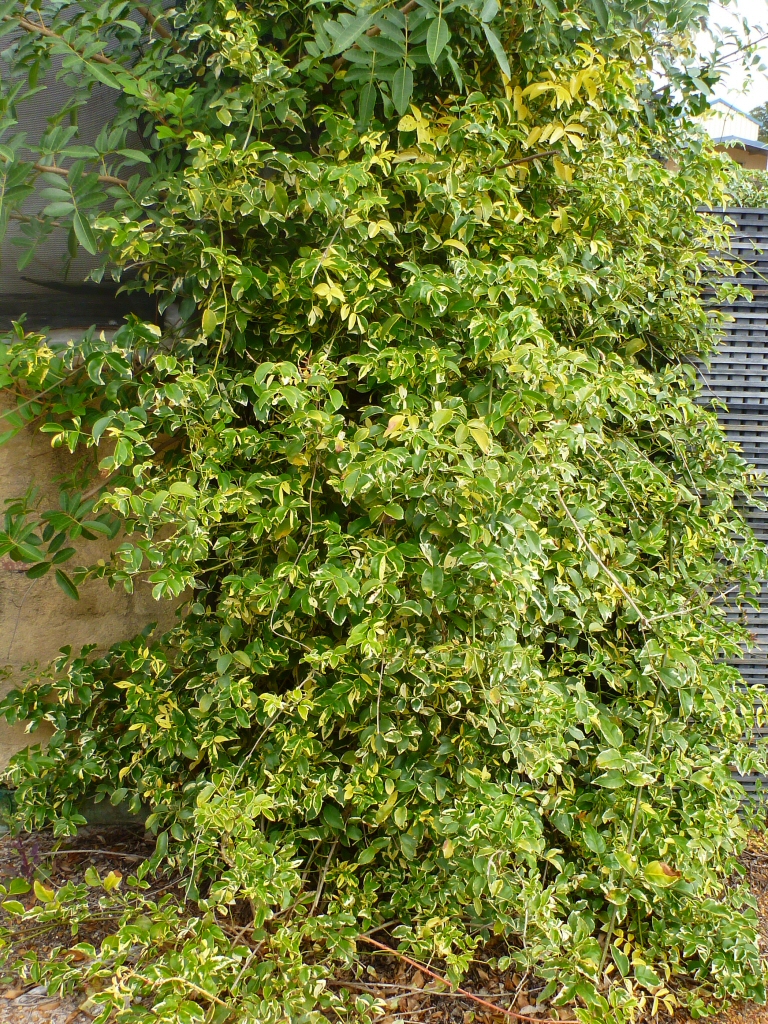
Pandorea jasminoides 'Charisma'
-
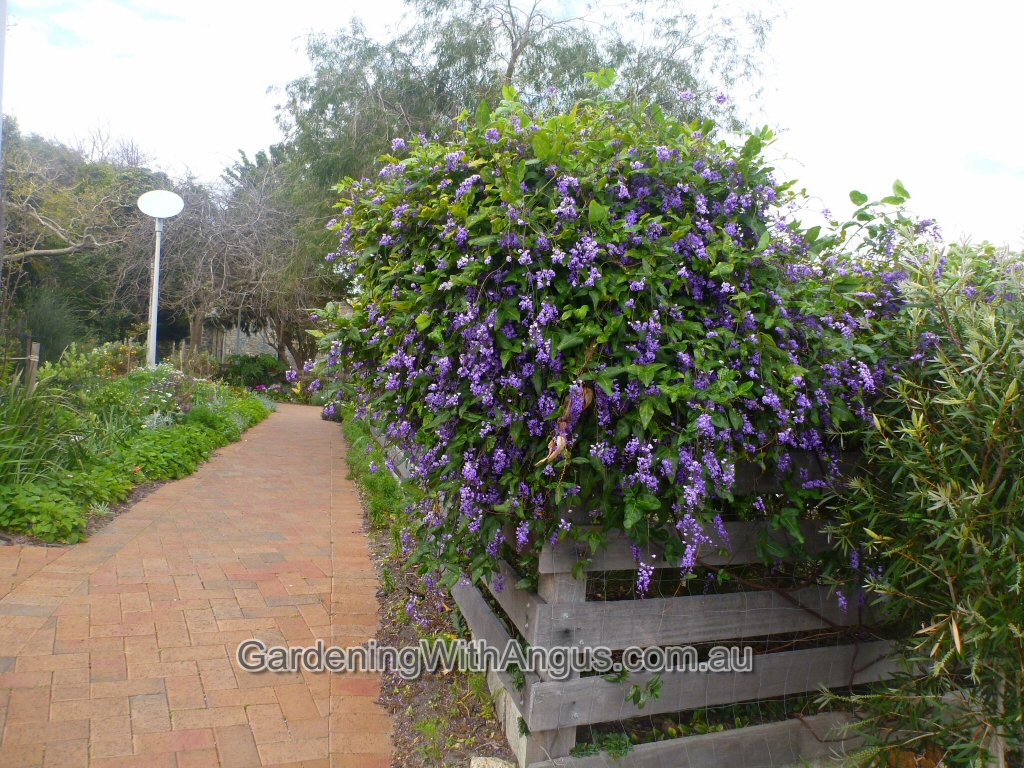
Hardenbergia comptoniana - native wisteria
Climbers and creepers can be found over a diverse range of habitats and climatic conditions from rainforests to dry eucalypt forests and even arid lands (in the case of Sturt’s desert pea) in various parts of the continent.
-
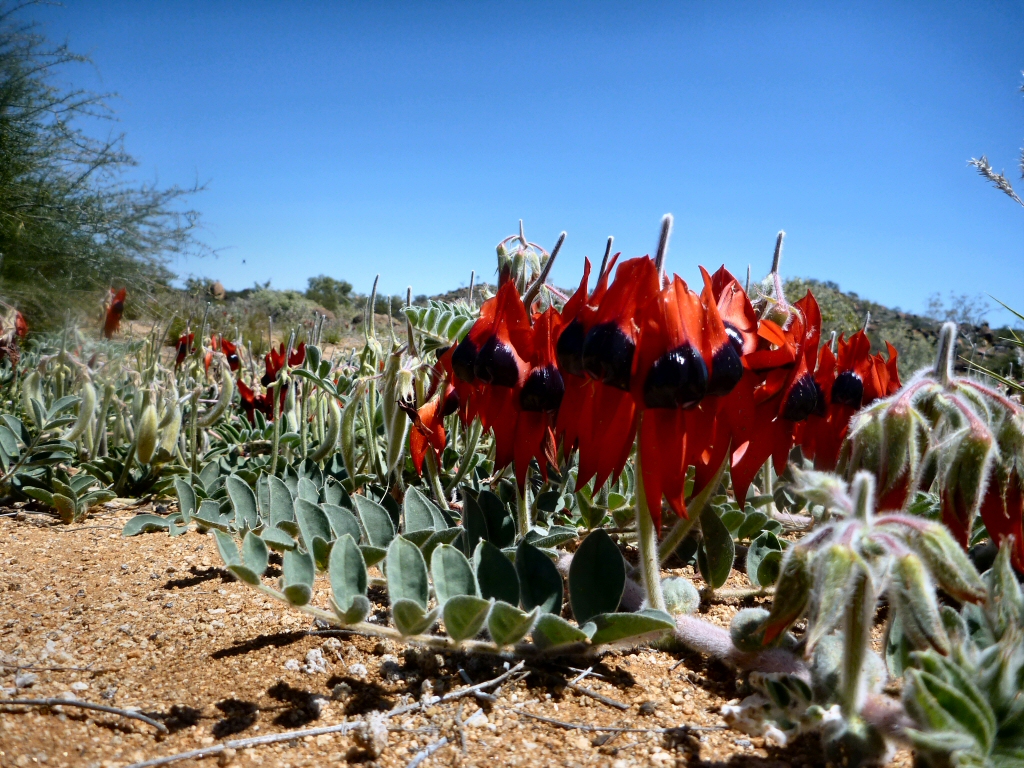
Swainsonia Formosa - sturts desert pea
-
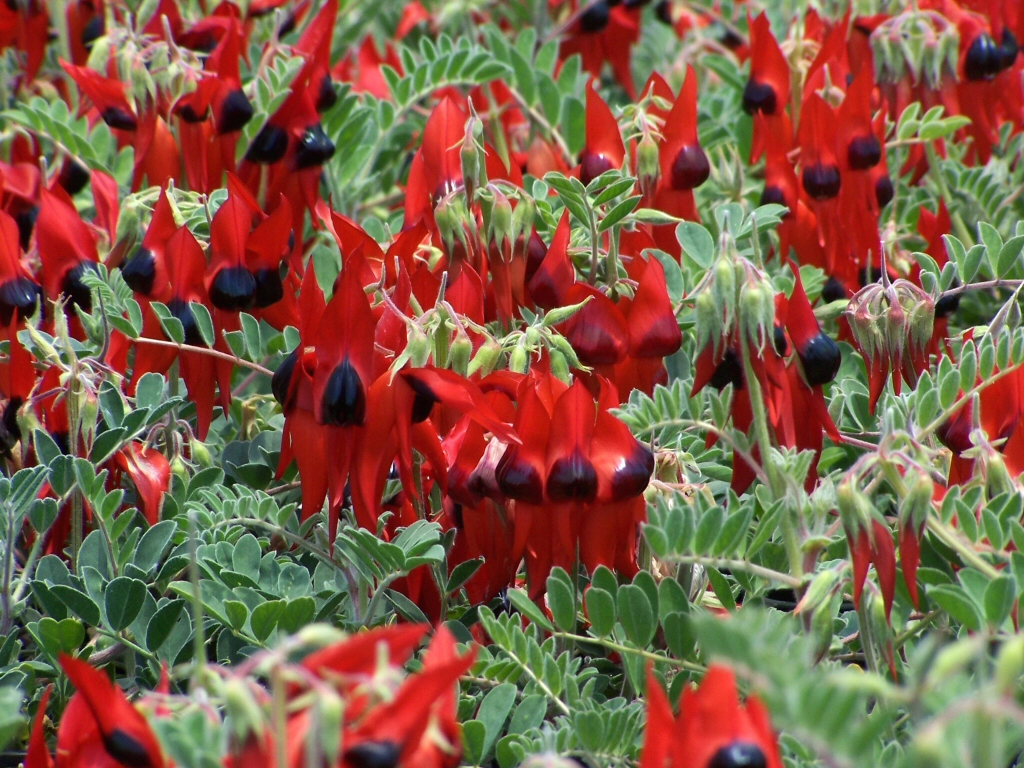
Swainsonia Formosa - sturts desert pea
-
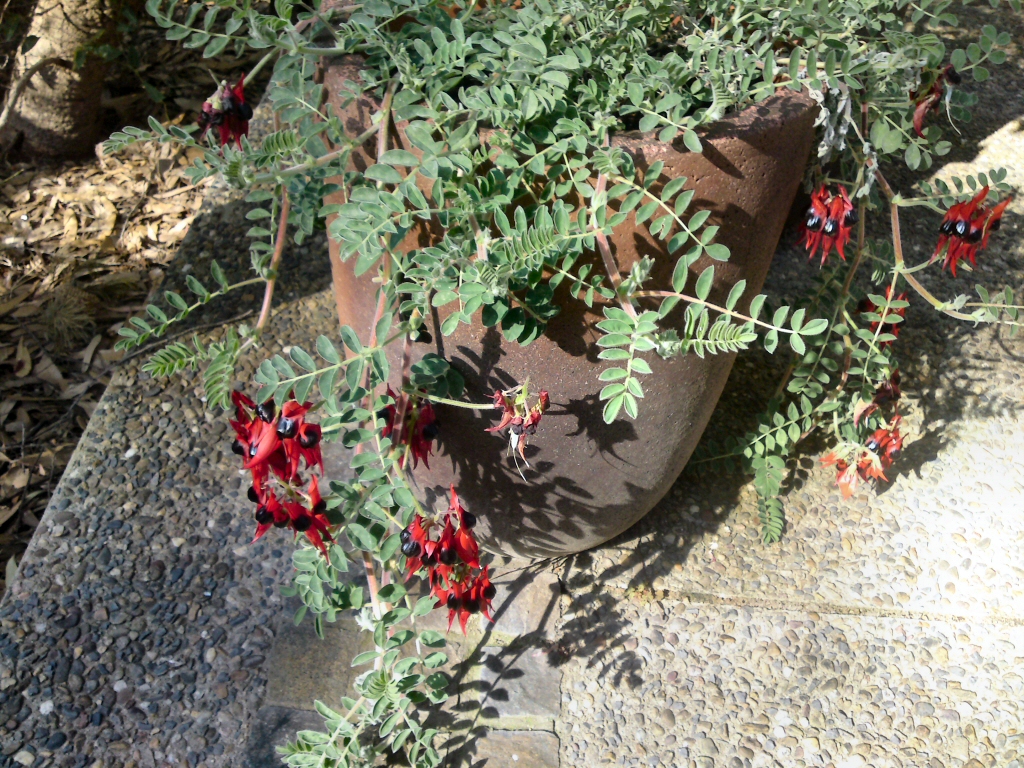
Swainsonia Formosa - sturts desert pea
It is important, therefore to establish the requirements of the species you wish to grow. Many of these plants are pioneer species that colonise disturbed soils after events such as bushfires with members of the pea family (Fabaceae) being particularly important. Such species are particularly useful for difficult situations such as embankments with exposed subsoil that require rapid cover with genera such as Hardenbergia and Kennedia being prime examples.
Pandoreas (Wonga wonga vine and bower of beauty vine)
The genus Pandorea is perhaps the most outstanding of all the Australian climbers and creepers. The bower of beauty, Pandorea jasminoides, produces flush after flush of its showy large trumpet-like flowers from spring right through to autumn.
-
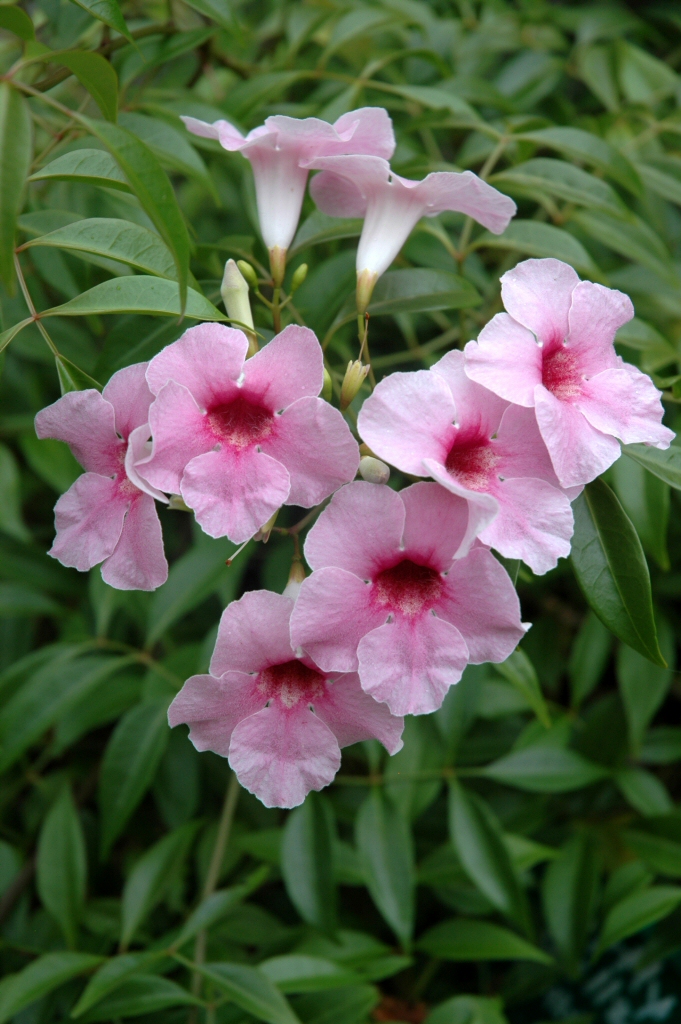
Pandorea jasminoides 'Flirty Bellz'
-

Pandorea jasminoides Wedding Bellz - bower vine
-
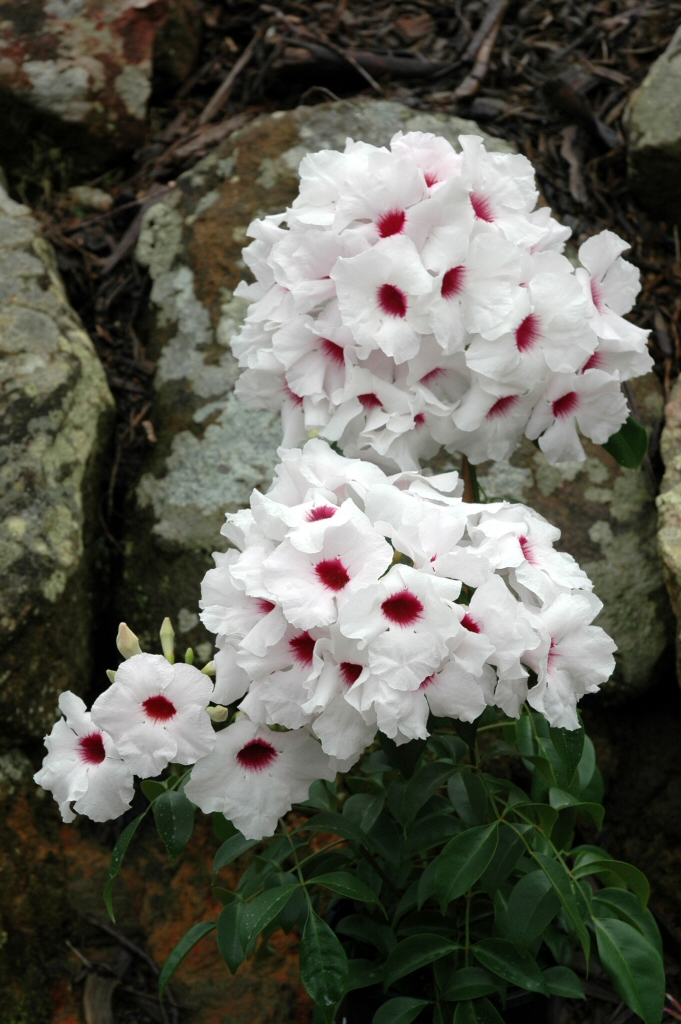
Pandorea jasminoides 'Jazzy Bellz'
It varies in colour from pure white (Wedding Bellz and Lady Di) to soft pale pinks (Flirty Bellz, Funky Bellz) through to darker pinks. They will often be beautifully marked, resembling orchid flowers, like the wonga wonga vine, Pandorea pandorana, which is a common plant in the gullies all up and down the Australian east coast.
The Wonga Wonga vine is a very rapid grower that comes in a range of colour forms also ranging from the usual small creamy flowers with crimson throat to pure white or even golden colours such as the cultivar ‘Golden Showers’ and ‘Lemon Glitters’. The flowers are smaller than Pandorea jasminoides, but are produced in great masses.
Closely related to the pandoreas is the Fraser Island creeper (Tecomanthe hillii) with deep green, pinnate leaves and solid pink, large tubular flowers in spring.
-
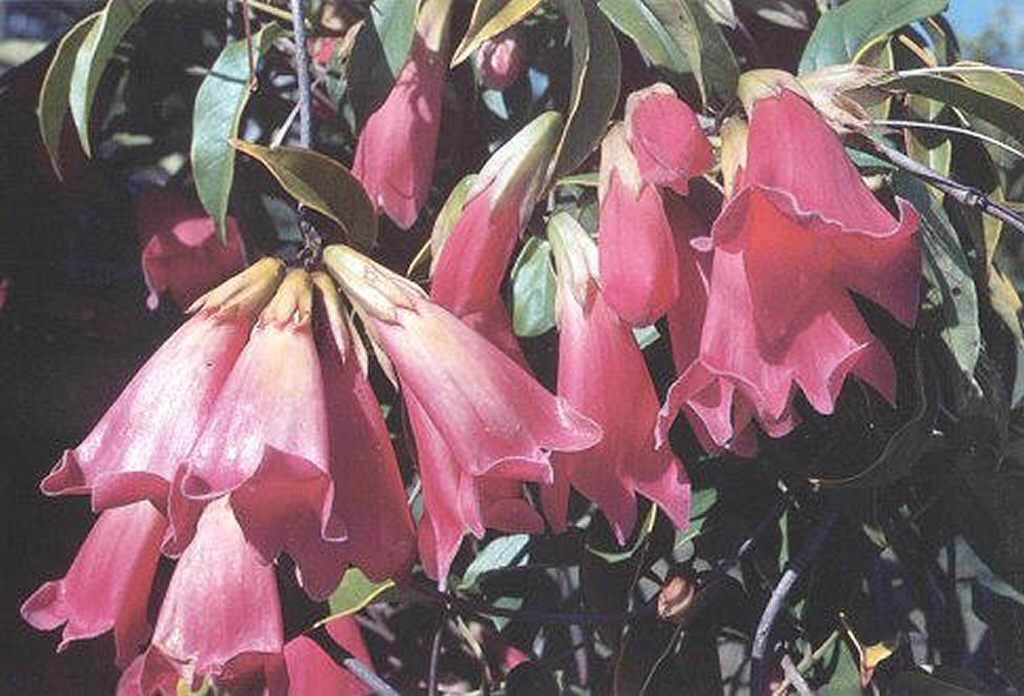
Tecomanthe hillii 'Edna Walling Island Belle'
-
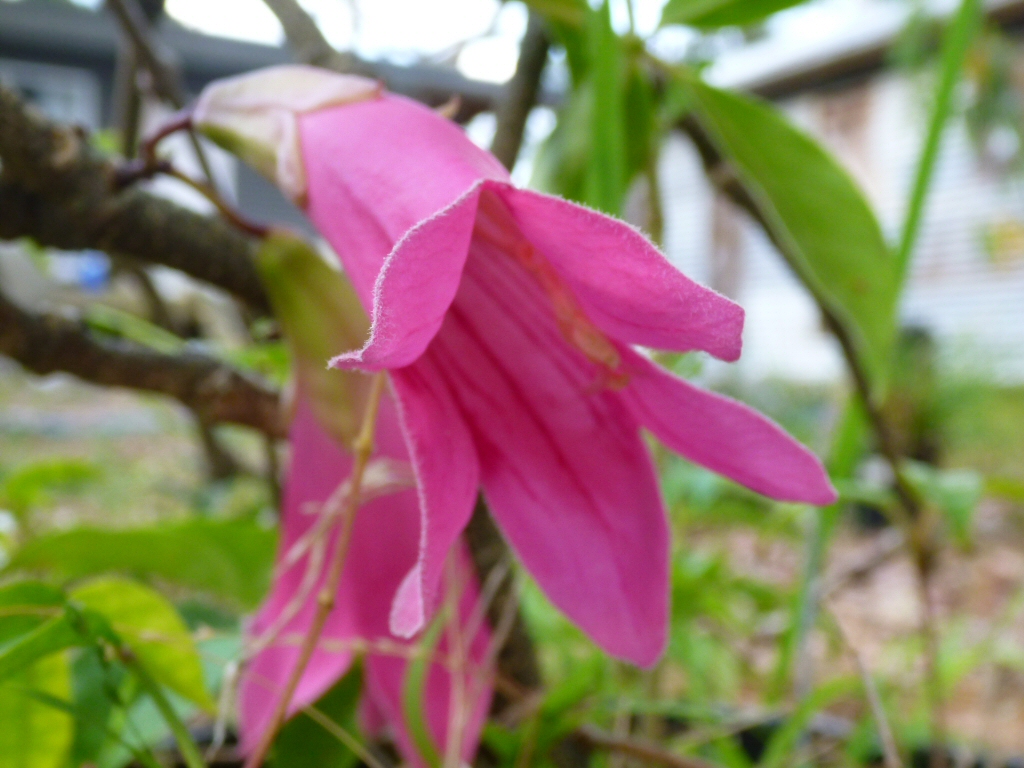
Tecomanthe hillii
-
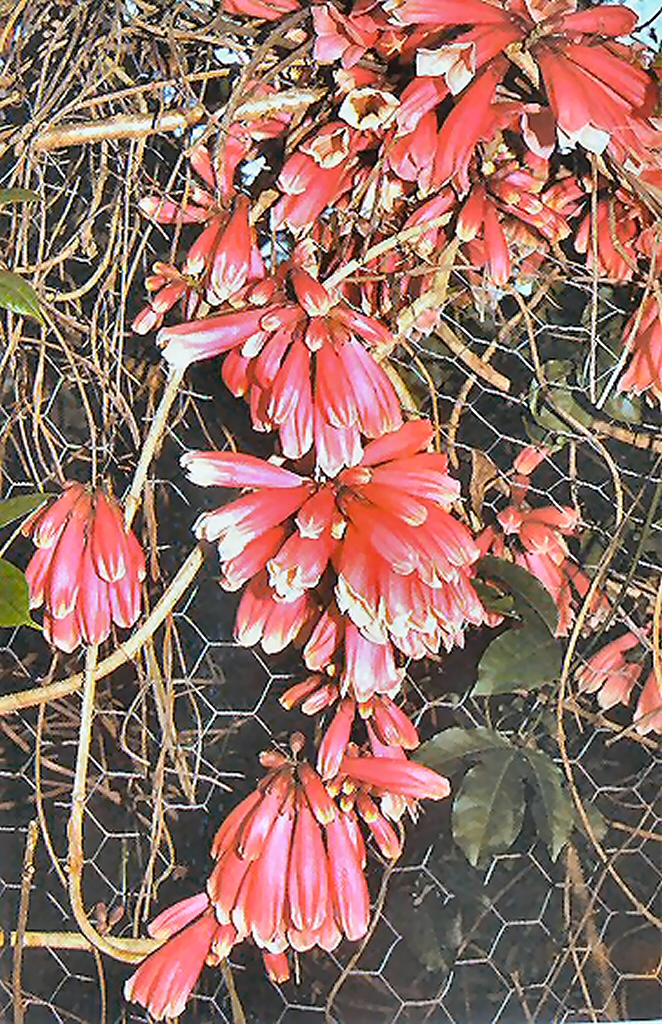
Tecomanthe hillii 'Edna Walling Island Belle'
Native Grapes (Cissus species)
The grape ivies (Cissus species) are superb plants for shady areas with their glossy deep green foliage being equally useful as either climber or ground cover. The kangaroo vine Cissus antartica has particularly ornamental foliage with toothed margins that have even made it popular as an indoor plant.
The common name native grape (C. hypoglauca) alludes to the fact that this genus belongs to the same family as the wine grape and actually bears small, edible grape-like fruits. Also known as the giant water vine this plant is very adaptable and makes a fantastic alternative to lawns in those difficult shady positions beneath trees in the garden.
Australian Native Pea Climbers
The pea family (Fabaceae) is one of the most diverse of all and contains many very adaptable and beautiful climbing plants that have long been recognised as outstanding garden plants. Native sarsparilla, Hardenbergia violacea, is perhaps the most adaptable of all Australian climbers and comes in either white, pink or purple and there are even shrubby compact forms such as ‘Minihaha’. They won’t grow as rampantly as some of the exotic climbers such as wisteria, making them a great substitute for gardeners that don’t like to be constantly pruning.
-
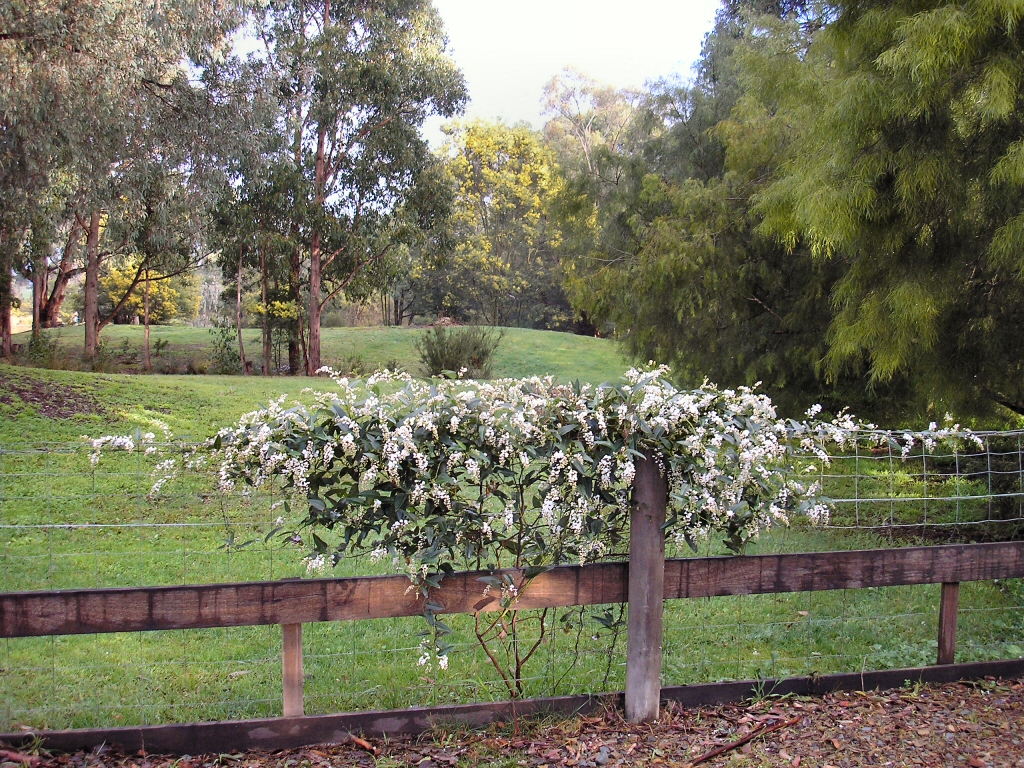
Hardenbergia violaceae 'Snow White'
-
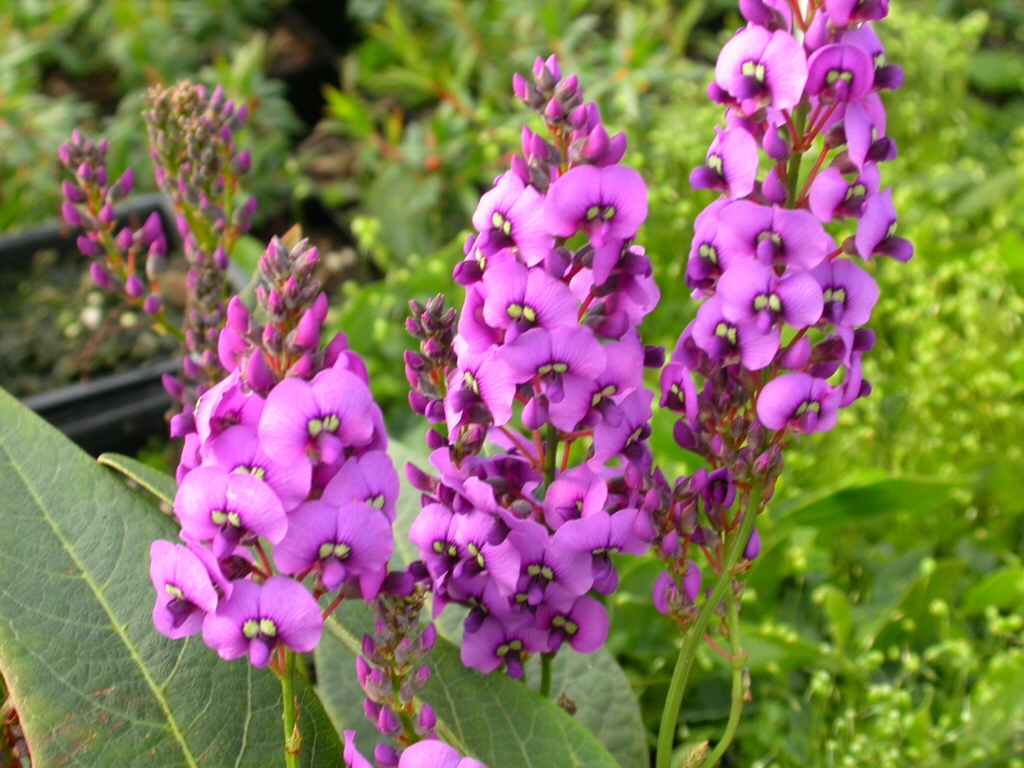
Hardenbergia violaceae 'Regent'
-
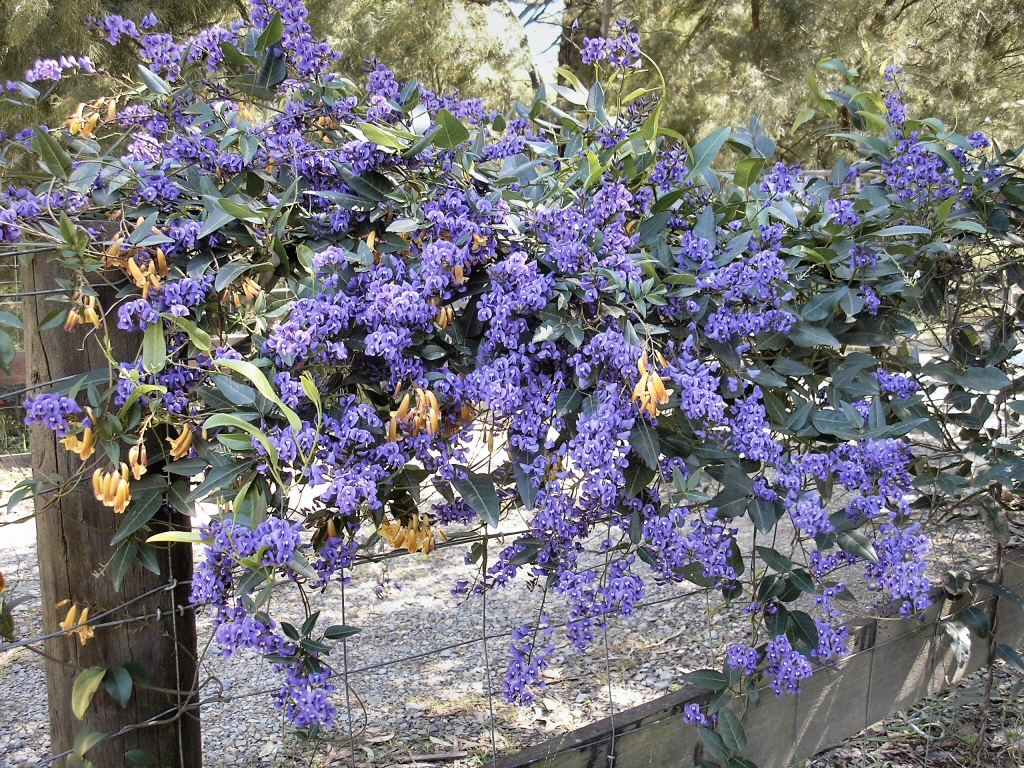
Hardenbergia 'Edna Walling Wild Wisteria'
The coral peas (Kennedia species) are also an outstanding group of twining climbers with an unusual range of colours available from the deep red of the dusky coral pea (K. rubicunda) to the iridescent bright red and yellow of the coral pea (K. coccinea), through to the very unusual yellow and black of the black coral pea (Kennedia nigricans).
Undoubtedly, though, the most spectacular is Sturt’s desert pea (Swainsona formosa). This is a touchy garden plant due to its arid origins, which make it very susceptible to root and leaf diseases. In recent years this wonderful plant has been made somewhat more reliable in cultivation by grafting it onto a tougher rootstock such as the kaka beak (Clianthus puniceus). I have seen some wonderful specimens grown in tall pots and large hanging baskets with a good open potting mix incorporating very coarse sand, which gives excellent drainage and a good airflow around the plant.
-

Swainsonia Formosa - sturts desert pea
-

Swainsonia Formosa - sturts desert pea
-

Swainsonia Formosa - sturts desert pea
Australia also has some interesting passionflowers (Passiflora species) that are worthy of a place in your garden for their beautiful flowers.
To see a range of climbers in my plant database, go to my plant search page and find the ‘plant type’ field, and enter ‘climber’. You can also add in any other requests such as sun, soil type etc to find exactly the right climber for you!

